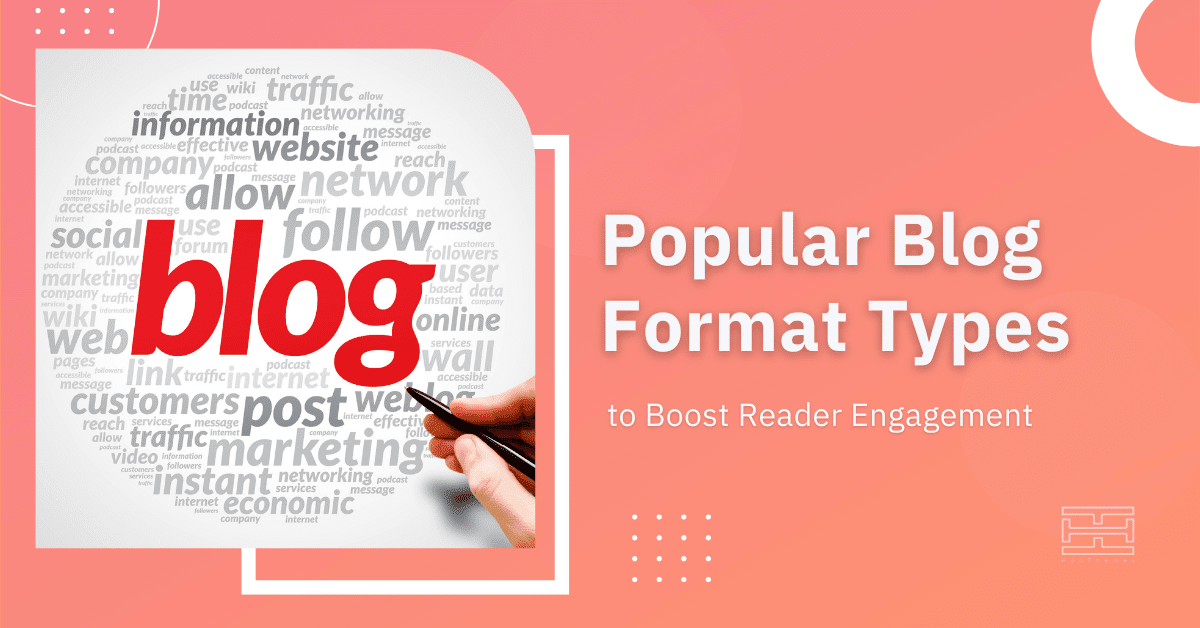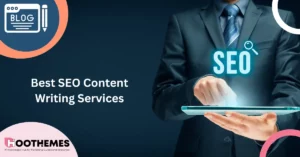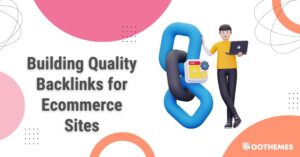Years ago, reading was limited to paper books, newspapers, and journals, but time has changed and so have the reading types.
Nowadays, newspapers are replaced by E-News, E-Books replace books, and more and more people prefer online reading.
Online writing and offline writing are very different. A blog is absolutely judged by its format, and you need to know how to format a blog and present the content to engage your audience. Otherwise, readers will not spend much time on your blog; they just skim.
What Is Blog Formatting?
Blog formatting properly means writing well-organized and qualified content that is grammar and punctuation error-free, and the ideas are supposed to be presented in an informative way.
You can create sections with headers and pictures to make it easier to read and more attractive to readers. A typical outline of an article includes an introduction, body, and conclusion.
What Is a Reader-friendly Blog?
A reader-friendly blog is one that keeps the reader engaged and eager to keep reading; it is divided into sections to make the content easier to read.
Why is Having Blog Post Format Important?
Your blog format is the first thing that makes a person want to stay on your page and keep reading or leaving it.
The advantages of an exemplary format blog are:
- It can impact your readers’ general understanding of the text.
- It can improve your SEO.
- It can make the content easy to read.
How to Have a Good Blog Format?
- Have short sentences; up to 25 words
- Write a couple of sentences for each paragraph
- The introduction should be three to five paragraphs
- Use a picture or graph after every 300 words
- Make bulleted lists with short informative sentences
- Place CTA where they are easy to see
- Use headers and subheaders
- Make sure links open in new tabs
- Have well-optimized title tags.
How to Format Your Blog Content?
- Have a clear outline
- Have a content related to your outline
- Have a clear headline
- Have an interesting introduction
- Have short sentences and paragraphs
- Have a table of content (TOC)
- Have visual content
- Have well-organized H2 and H3
- Have bolded text in the right way
- Have white space
The Popular Content-Format Types That Can Boost Audience Engagement
Content marketing has become one of the essential marketing tools and a main SEO search ranking factor. Along with the proper format, you can reach the highest.
But just like most other things, there is no single type that is appealing to everyone and serves different needs and purposes.
Types of Blog Formats
Here you can find some popular formats.
Blog Format Type 1: The Listicle (List Article)
The term “Listicle” is a blend of the words “list” and “article.” so obviously, this format is for articles consisting of a series of facts, tips, quotations, and any other examples of lists. These articles can be numbered or bulleted.
The format uses listed and short sentences and breaks down the complex ideas into more comprehensive chunks. Short sentences are easy to write and read, so it is a perfect choice for targeting the long-tail of a keyword.
Blog Format Type 2: How-to Post
As the name implies, this blog format teaches readers how to do something, which can be a music lesson, a food recipe, or a blog post writing.
How-to articles aim to answer readers’ questions, and that is why “how-tos” pop up in headlines as the immediate result of people’s searches; it signals that there is an answer to your question or a solution to your problem.
To have a more organized article and help your audience, you can explain the steps in sections and lead the reader through the text.
Blog Format Type 3: Comparison Post
Having comparison posts is an excellent way to introduce your products or services in an A vs. B blog post and help readers decide what to do. You can also compare your product to your competitor’s in side-by-side columns and make it easier for them to understand the advantages and disadvantages of each.
Related article: 5 Things You Should Know About Ecommerce Sales Funnel Optimization
Blog Format Type 4: “What is” Post
“What is” post is definitional writing to answer questions like “what is” in detail and several examples to give readers a deeper understanding of context.
Blog Format Type 5: Case Study
A case study is an in-depth study about a person, a group of people, or a unit in the real world to be generalized over several units.
The importance of the case study in blogging is that you can prove your credibility by bringing your success to light and showing your target audience you are the best.
Most of the people who are searching for case studies are not doing it on search engines, and it happens directly on a website to evaluate the exact product or service.
Blog Format Type 6: Product Showcase
If you want to display your products and services, the best place is your blog; you can introduce your bestselling products and services, present how they can be used, and get extra promotion.
Using visual articles and samples in different styles and colors to represent your product’s capability can significantly influence your audience.
Related article: Google Analytics Heat Mapping: A Few Quick Tips to Get the Best Results
Blog Format Type 7: Thought Leadership Post
Content marketers use this tactic to build credibility for themselves or their company’s leaders; The primary purpose is to be known as an expert in that specific field.
Thought leadership posts need more time to write, but they are highly engaging; since they use original ideas and give readers a broader view.
Blog Format Type 8: “What not do to” Post
This format highlights things you should avoid doing instead of saying what to.
For example, when writing a blog post, you shouldn’t choose a broad topic; you shouldn’t use poor information sources, etc.
Blog Format Type 9: The Beginner’s Guide
A beginner’s guide is a blog post that provides a complete and detailed overview of a topic so that a beginner can fully understand it.
It needs clear explanations, enough background information, and examples. You’d better break the long sentences into shorter ones and make sure your text answers questions “what,” “how,” and “why.”
Related article: CRAP Design Principles: 5 Core Principles to Consider
Blog Format Type 10: Interview Post
Gathering newsworthy data and interviewing someone in your field can provide your readers with further insights into the positive and negative points of the topic. The format in interview posts is Q&A, and it usually contains a mix of question types.
Blog Format Type 11: The Ultimate Guide
The ultimate guide is a format that includes even more explanations than “How-to” posts. It covers all the aspects and provides clear steps for doing something.
The ultimate guides are comprehensive and authoritative posts referenced repeatedly and aim to teach you everything you need to know about a subject.
Blog Format Type 12: Pillar Page
A pillar page is a web page that wraps an overall topic and links groups of related content that cover the subject in more detail.
As Pillar pages broadly cover the topic, cluster content should address specific related keywords to the topic in-depth.
As a result, Pillar pages are longer than typical blog posts because they mention and link almost all related subjects.
Related article: The Simple Formula for Success in Checkout Page Design
Blog Format Type 13: Myth Debunker
Myth debunkers are posts that reveal a common myth of your industry. As a writer of myth debunkers, you have the chance to stand out as an expert with a fresh approach and bring all the truth into the shed of light.
For example, if you find an article like “X myths you should stop believing in,” you face a myth debunker.
Blog Format Type 14: Expert Roundup
For this type of blog post, you ought to gather experts’ opinions on a topic. The experts are mostly famous authority figures in their industry, and there is a possibility that they will share your published post or link you back.
Expert roundups aim to create highly informational pieces, and not many people search for this blog on google.
Blog Format Types: The TL;DR Version
To engage your visitors to read and stay on your page for a longer time, you need a combination of qualified content, related visuals, and the right formatting. Considering these small features helps you get an edge over your competitors.





![Read more about the article Sponsored by Adidas [in 2023]: The Ultimate Guide to Choosing the Perfect Running Shoes](https://www.hoothemes.com/wp-content/uploads/2023/04/Hoothemes-2-300x157.png)
![Read more about the article What is a Microsite in 2022? [+Important Pros & Cons]](https://www.hoothemes.com/wp-content/uploads/2022/09/What-is-a-Microsite-in-2022-Pros-Cons-300x157.png)


